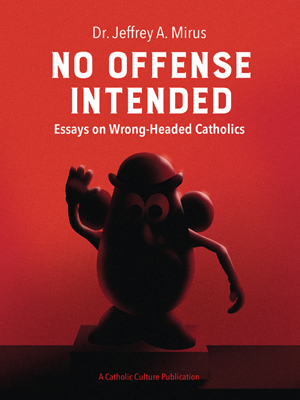The Perils of Making a Point
By Dr. Jeff Mirus ( bio - articles - email ) | Aug 25, 2009
Recently we added to our library a fine little article from The Adoremus Bulletin by Matthew Peszek on Sacred Art as a Pedagogical Tool . The author uses Caravaggio’s painting of the call of St. Matthew as his case in point.
But when looking at it for the second time, I noticed a problem in the following text:
The Council of Trent had briefly addressed the role of art during the Twenty-Fifth Session, in December 1563. In the Decree on the Invocation, Veneration, and Relics of the Saints, and on Sacred Images, the Council stated: “Moreover, let the bishops teach that by means of the stories of the mysteries of our redemption portrayed in paintings and other representations the people are instructed and confirmed in the articles of the faith, which ought to be borne in mind and constantly reflected upon.” This statement gave a basic direction and key goal for what sacred art should achieve. The decree stated that the primary goal of sacred art was to educate the viewer and teach Catholic doctrine.
The problem is that the author erroneously leads the reader to believe that the Council of Trent defined that the primary purpose of sacred art is to teach. I’m sure there are many little things in our library documents—and, indeed, in my own writings—which are slightly misstated, and I’m also sure that I haven’t yet begun to catch them all. But because I had just completed a brief study of the Catholic understanding of art, and had just written a column on Beauty, I did catch this one.
It seemed a shame to drop the article, yet I really hate it when any of our materials mislead anyone about what the Church has officially taught. The best solution seemed to me to insert the following editorial note:
Actually, the Decree does not say that the primary goal of sacred art is to educate and teach. This is erroneously inferred by the author. The decree states that sacred art does, in fact, have this effect of educating and teaching, as opposed to those (particularly Protestants) who wanted to strip churches of art for fear that these images would somehow stand in the way of God. The Church knows well that the primary purpose of all art is to express beauty, and so touch the heart of man, opening him to the absolute; and that sacred art is to do this with subjects and themes which relate to God's saving love for man. This note is necessary in an otherwise fine article to avoid leading the reader to conclude that the Church has somehow defined that sacred art must be primarily pedagogical and didactic, or that the value of sacred art is to be judged in the first place not by its beauty but by the clarity of its “message”, a criterion which ultimately undermines all art.
Sometimes I wonder if I’m being too picky, but in fact the pedagogical argument leads directly to banners with slogans. It is possible, of course, that Caravaggio bloomed where he was planted, but his painting is much more than a slogan, a maxim, or even a lesson. It invites wonder and contemplation, opening the heart to God. And why? Because, before the teacher even begins to roll out his lecture notes, it was already art.
All comments are moderated. To lighten our editing burden, only current donors are allowed to Sound Off. If you are a current donor, log in to see the comment form; otherwise please support our work, and Sound Off!









